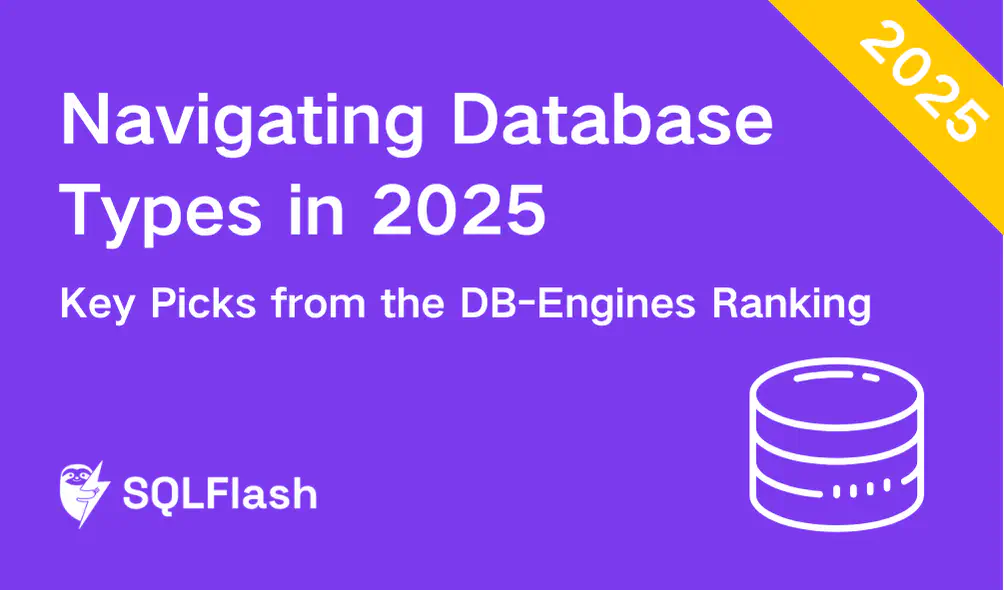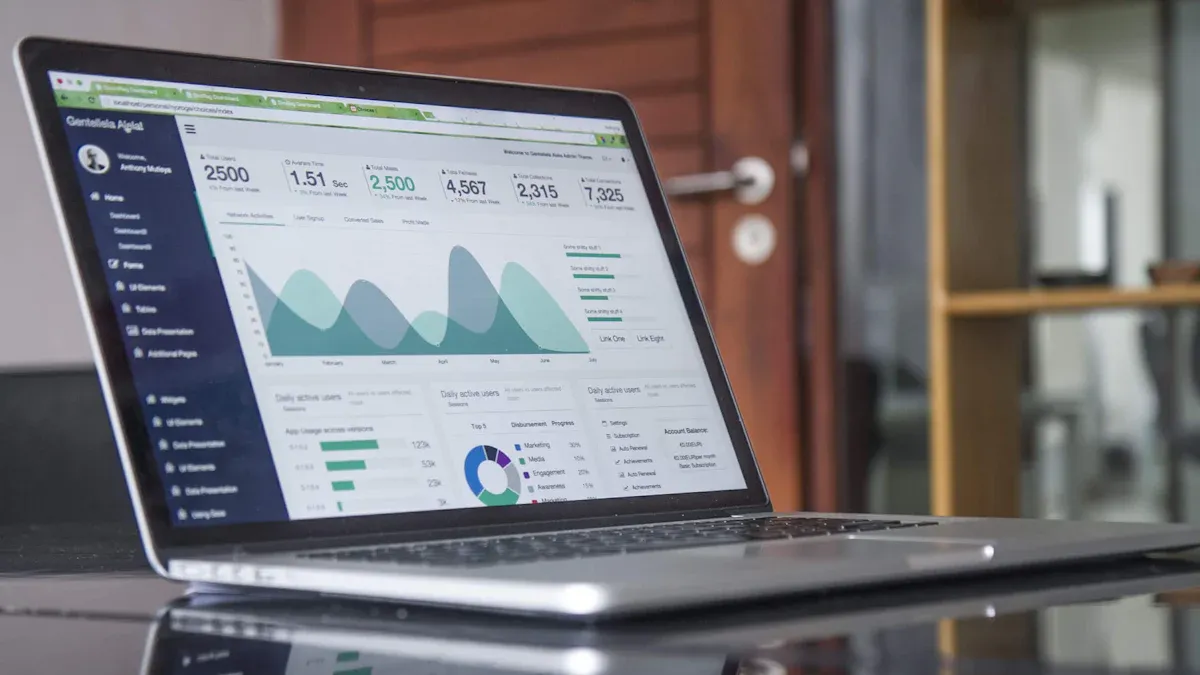Navigating Database Types in 2025: Key Picks from the DB-Engines Ranking



Choosing the right database DB-Engine in 2025 is very important. It can help your project succeed or fail. The DB-Engine ranking lists MySQL, Oracle, Microsoft SQL Server, PostgreSQL, and MongoDB at the top. These databases are popular for different reasons. They have strengths like speed, reliability, and flexibility. The ranking changes every month. It uses factors like popularity, tech talks, and job offers. Here are things to think about when you pick a database DB-Engine:
| Factor | Description |
|---|---|
| Data Model Alignment | Fits your data, whether it is neat or messy. |
| Scalability | Grows with your business and handles more data. |
| Performance | Keeps things fast for users and teams. |
| Reliability | Gives steady results and correct information. |
| Security | Keeps important data safe and follows rules. |
| Cost Considerations | Compares free and paid choices. |
| Community and Support | Helps you fix problems quickly. |
Are you not sure which database DB-Engine is best for you? You can learn about their strengths and weaknesses. You will also get tips to help you choose.

Image Source: pexels
When you look for a Database DB-Engine, it can feel confusing. There are so many choices out there. DB-Engines helps by ranking databases every month. They check how much people talk about each one online. They look at websites, forums, and job boards. They also use Google Trends and look at work profiles. This helps you see which databases are popular in 2025 and why they matter.
Relational databases have been used for many years. You use them to keep data in tables. This keeps your data neat and organized. These databases follow rules to keep your data safe and correct. They use the ACID model, so your data is always reliable. If you want simple and organized data, pick a relational Database DB-Engine.
Here’s a quick way to see how relational and NoSQL databases are different:
| Category | Relational database | Non-relational database |
|---|---|---|
| Data model | Tabular. | Key-value, document, or graph. |
| Data type | Structured. | Structured, semi-structured, and unstructured. |
| Data integrity | High with full ACID compliance. | Eventual consistency model. |
| Performance | Improved by adding more resources to the server. | Improved by adding more server nodes. |
| Scaling | Horizontal scaling requires extra strategies. | Horizontal scaling is straightforward. |
Tip: Use relational databases when you need strong data rules and clear links between your data.
NoSQL databases work differently. You use them when your data does not fit in tables. They let you store many types of information. This can be documents, graphs, or key-value pairs. NoSQL uses the BASE model. This means they focus on being available and flexible. The data may not always be up-to-date, but it is easy to use.
Here are the main types of NoSQL databases you might see in 2025:
Key-Value Stores
Wide Column Stores
Document Stores
Graph DBMS
RDF Stores
Native XML DBMS
Content Stores
Search Engines
Better performance for big jobs
Easy sharing of data across many servers
Good scaling and fault tolerance
Flexible data models without a set structure
Simple management
You might choose a NoSQL database if you have lots of data, want to grow fast, or need to work with many types of information.
Many developers pick MySQL for their projects. In 2025, it is still a top choice for many reasons.
Reliability: MySQL keeps your data safe and ready to use.
Scalability: It can grow as your project gets bigger.
Performance: MySQL works fast, even with many users.
High availability: Your service stays up, even if there are problems.
Security: MySQL uses strong tools to protect your data.
Flexibility: You can use MySQL for many kinds of projects.
Tip: MySQL is a good choice for both small and big projects.
MySQL is popular, but it has some problems you should know.
| Weakness | Description |
|---|---|
| Limited Scalability | MySQL can have trouble with very large databases or lots of data. |
| Performance Degradation | MySQL can slow down if too many people use it at once. |
| Complexity in High Availability | Setting up high availability can be hard and may cause mistakes. |
You can find MySQL in many places, from small companies to big ones. Here are some ways people use it in 2025.
Developers and startups often use MySQL for new ideas.
Big companies use MySQL because it is trusted and has good support.
Teams building web apps like that MySQL is stable and proven.
MySQL 8.0 has better ways to recover data, so it is even safer.
MySQL uses C, C++, and SQL, so it fits with many tech tools.
You can pick from different editions, each with special features.
Note: MySQL is fast, safe, and flexible, so people use it for web apps, online stores, and business tools.
Oracle is a top pick for many companies in 2025. It gives you lots of power and flexibility. Here are some reasons why people like Oracle:
| Strength | Description |
|---|---|
| Portability | You can use Oracle on many computers and networks. This helps you make apps that work everywhere. |
| Backup and Recovery | Oracle has strong backup tools. You can get your data back to any time you want. |
| High Performance | Oracle works fast with big databases and many tasks. You get quick results, even with lots of work. |
| Multiple Database Support | You can handle many databases in one job. This makes hard tasks easier. |
Tip: Pick Oracle if you need a database that works with lots of data and stays strong.
Oracle has some problems you should know before you choose it. Here are the main things people talk about in 2025:
A deserialization problem (CVE-2025-30748) let hackers run bad code. Oracle fixed it, but you need to watch out.
A session fixation issue (CVE-2025-30747) could let someone take over sessions in PeopleSoft CRM.
Using default passwords for Connect ID in PeopleSoft is not safe. Hackers might get in without permission.
You have to keep updating Oracle because new security problems show up often. You need to pay attention to security all the time.
Note: Always update Oracle and use strong passwords to keep your data safe.
You might use Oracle if you have a big company or lots of data. Here are some ways people use Oracle in 2025:
Big companies use Oracle for banks, hospitals, and stores. It handles millions of jobs every day.
You can use Oracle for cloud work. It does well with mixed and multi-cloud systems.
Teams that need good backup trust Oracle to keep their data safe.
If you need to run many databases at once, Oracle makes it simple.
Developers pick Oracle when they want a system that grows with them.
Oracle is a good choice if you want a database that is strong, flexible, and ready for big jobs.
Microsoft SQL Server has many helpful features. It is powerful and smart. Here are some reasons people like it in 2025:
| Key Strengths | Description |
|---|---|
| Enhanced Security Features | Always Encrypted lets you use data without unlocking it. You also get role-based access control. |
| Improved Performance | SQL Server uses fast CPUs and NVMe storage. This makes your data move quicker and helps with many tasks. |
| Built-in AI Capabilities | You get AI tips for your work and better vector search speed. |
| Hybrid Environment Support | Azure Arc lets you manage SQL Server in the cloud and on your own servers. |
Tip: SQL Server is a good choice if you want your data safe and your system fast.
SQL Server is strong, but it has some problems:
Some bugs are still there, and Microsoft has not fixed them.
There is a 4,000-character limit for SQL queries. This can be a problem if you need longer queries.
Note: Make sure these limits will not hurt your project before you begin.
You can use Microsoft SQL Server for many business jobs. Here are some common ways people use it in 2025:
| Use Case | Description |
|---|---|
| Real-time analytics | You can see data changes right away for quick answers. |
| Integration with Azure | Move data between SQL Server and Azure for better analytics. |
| Enhanced reporting | Use Power BI Report Server for custom and interactive reports. |
| Near-real-time data refresh | Reports update often, so you always have new info. |
| AI application support | Build smart apps with strong security and fast speed. |
| Power BI integration | Connect to Power BI for easy reports and analytics. |
| Customizable reporting | Make data models for reports that fit what you need. |
If you need strong analytics, good reports, or want to use both cloud and local data, SQL Server has the tools for you.
PostgreSQL is good if you want a database that can grow. Many developers in 2025 like it for its smart features and strong support. Here are some reasons why PostgreSQL is special:
| Strengths | Description |
|---|---|
| Advanced time-temporal capabilities | You can easily keep track of data with time stamps. This helps apps see changes over time. |
| Robust features | PostgreSQL lets you do hard searches, use JSON/XML, and find words fast. It also has window functions. |
| Active open-source community | You get help and new ideas from many users and developers. |
| Cloud-native adoption | PostgreSQL works well in the cloud. You can make it bigger and use it for large projects. |
Tip: Pick PostgreSQL if you want a database that is flexible and ready for the future.
PostgreSQL is strong, but it has some problems. Here are things you should know:
Setting up and taking care of PostgreSQL can be hard for new users. You may need more time to learn.
It does not have easy built-in horizontal scaling. You need extra tools to use many servers.
If lots of people read data at once, it can slow down.
It does not have many NoSQL features. It is not the best for projects that need automatic sharding or flexible data models.
Note: You can fix most problems with the right tools and some patience.
PostgreSQL works for many jobs, especially with cloud and open-source projects. Here are ways people use it in 2025:
| Use Case | Description |
|---|---|
| Multi-Tenant Architectures | You can run different PostgreSQL copies for each microservice. This makes scaling simple. |
| Monitoring and Observability | PostgreSQL gives you good insights and works with cloud tools for alerts and tracking. |
| Multi-Cloud Flexibility | You can use PostgreSQL in many cloud places. You do not have to stick with one company. |
| Edge Computing | PostgreSQL is light. It can handle data close to where it is made. This cuts down delays. |
| IoT Data Management | Add-ons like TimescaleDB help you store and study sensor data from smart devices. |
| Edge-to-Cloud Synchronization | You can move data fast between faraway sites and the cloud. This saves bandwidth. |
If you want a database for many needs, PostgreSQL gives you tools to build, grow, and try new ideas.
You might want a database that feels modern and easy to use. MongoDB gives you that. Here are some reasons why developers love MongoDB in 2025:
Document-Oriented Data Model: You can store data in flexible documents using BSON. This makes it simple to handle different types of information.
Horizontal Scalability: You can add more servers when your app grows. This helps you manage more users and data without slowing down.
Flexibility in Data Structure: You can change your data model anytime. You do not need to plan everything from the start.
Support for Ad-Hoc Queries: You can search your data in many ways. MongoDB lets you find what you need quickly.
Real-Time Analytics: You can watch your data as it changes. This helps you make fast decisions.
High Performance: MongoDB works fast, even with lots of data.
MongoDB Atlas: You can use a managed cloud service. This means you do not have to worry about updates or backups.
Tip: MongoDB is great if you want to build apps that need to change and grow fast.
MongoDB is strong, but you should know about some challenges:
Vendor Lock-in: You might get stuck with long contracts. This can make it hard to switch to another database.
Contract Restrictions: Some users find it tough to renew or change their contracts.
Licensing Strategy: The new license (SSPL) makes it harder to move away from MongoDB. Some people worry about openness.
Note: Always check the contract and license before you choose MongoDB for your project.
You can use MongoDB for many types of apps in 2025. Here are some popular ways people use it:
| Use Case | Description |
|---|---|
| Content Management | Manage and deliver content quickly. |
| IoT Dashboards | Show real-time data from smart devices. |
| E-commerce Platforms | Support online shopping and payments. |
| Financial Dashboards | Analyze money trends and data. |
| Gaming Platforms | Run the backend for games. |
| Messaging Apps | Help people chat in real time. |
If you want a Database DB-Engine that is flexible and ready for modern apps, MongoDB is a smart pick.

Image Source: unsplash
You want your database to run fast, even when lots of people use it. MySQL and SQL Server both give you strong speed for web apps and business tools. Oracle handles big jobs and lots of data without slowing down. PostgreSQL works well for complex searches and cloud projects. MongoDB shines when you need quick access to lots of changing data, like in real-time dashboards.
If your project grows, your database should keep up. Here’s how the top choices help you scale:
Serverless options let you add more power when you need it, so you do not have to manage servers.
You only pay for what you use, which helps with costs.
MongoDB spreads data across many servers. This makes it easy to handle lots of users and unstructured data.
MongoDB’s design also keeps your data safe and always available.
You may need to change your data model as your app grows. MongoDB lets you do this easily with its schema-less design. PostgreSQL supports both structured and semi-structured data, so you can mix things up. MySQL and SQL Server work best with neat, organized data. Oracle gives you tools for both simple and complex data needs.
Keeping your data safe is a must. All top databases offer strong security, but you should watch for new risks. For example, a recent SQL injection issue (CVE-2025-25181) could let hackers get in and cause trouble. Here’s a quick look:
| Vulnerability ID | Description | Impact |
|---|---|---|
| CVE-2025-25181 | SQL injection in Advantive VeraCore | Data breach, business risk |
Tip: Always update your database, use input checks, and set up firewalls.
Choosing the right Database DB-Engine depends on your needs. Check this table for expert tips:
| Criteria | Description |
|---|---|
| Performance Requirements | How fast and big your app needs to be |
| Team Expertise | What your team already knows |
| Budget Constraints | How much you can spend |
| Market Availability | How easy it is to hire help |
| Business Timeline | How fast you need to launch |
| Long-term Maintenance | How easy it is to update and support |
Think about your project’s size, your team’s skills, and your budget. Pick the database that fits your goals and can grow with you.
You saw that MySQL, Oracle, SQL Server, PostgreSQL, and MongoDB lead the 2025 rankings.
SQL databases still rule, but NoSQL options like MongoDB are growing fast because they scale well and cost less.
Always match your database to your project’s needs and your team’s skills.
Want to make a smart choice? List your goals, check your budget, and pick the database that fits best.
DB-Engines Ranking shows which databases are most popular. It checks things like online mentions, job ads, and website visits. You can use it to see what other people use and trust.
Start by listing your needs. Think about speed, cost, and how much data you have. Ask your team what they know best. Try a small test before you decide.
Yes, you can switch, but it takes work. You might need to move your data and change your code. Plan ahead to make switching easier.
NoSQL databases work well for flexible or fast-growing data. Relational databases keep things neat and safe. Pick what fits your project best.
Yes! Always update your database. Use strong passwords. Watch for new risks. Good security keeps your data safe from hackers.
SQLFlash is your AI-powered SQL Optimization Partner.
Based on AI models, we accurately identify SQL performance bottlenecks and optimize query performance, freeing you from the cumbersome SQL tuning process so you can fully focus on developing and implementing business logic.
Join us and experience the power of SQLFlash today!.